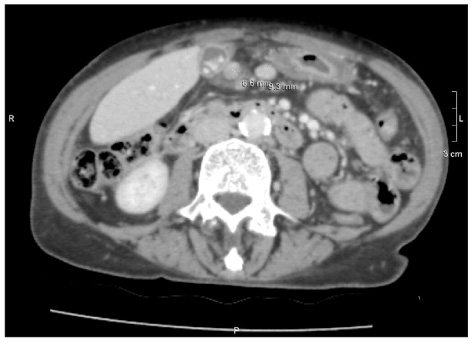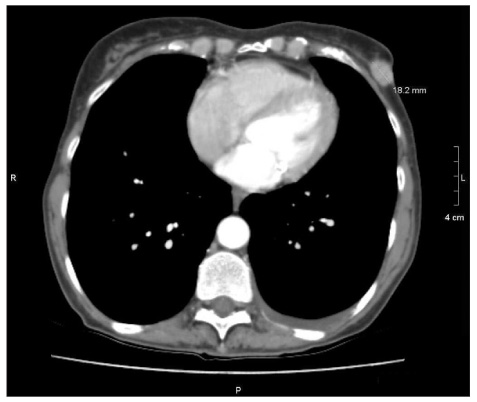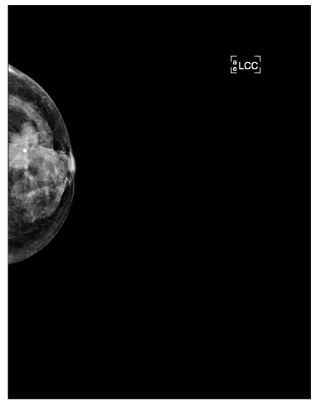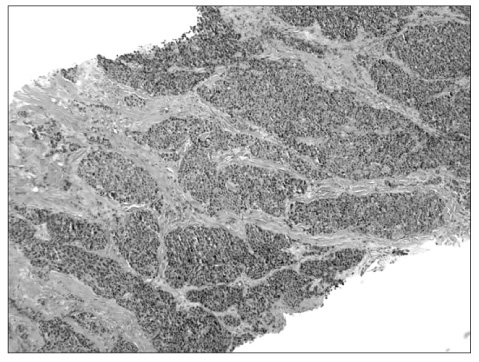J Gastric Cancer.
2011 Sep;11(3):180-184. 10.5230/jgc.2011.11.3.180.
An Effect of Letrozole on Gastric Cancer?
- Affiliations
-
- 1Department of General Surgery, Aneurin Bevan Healthcare NHS Trust Nevill Hall Hospital, Wales, United Kingdom. ahmed.elhadi@gmail.com
- KMID: 2055516
- DOI: http://doi.org/10.5230/jgc.2011.11.3.180
Abstract
- Letrozole is a drug used in the treatment of postmenopausal women with breast and ovarian tumours. There is no evidence in the literature indicating its use in treating gastric cancer. We present a 68 year old lady admitted from the emergency department with weight loss, malaise and anaemia. Investigations confirmed the presence of two different primary tumours in the left breast and the stomach. Following that this patient with oestrogen receptor positive breast cancer and oestrogen receptor negative gastric cancer was treated with letrozole for her breast cancer followed by a gastric resection. Independent histology by two pathologists pre-operatively diagnosed gastric adenocarcinoma. Post-operatively, independent analysis of the resected stomach, omentum and lymph nodes revealed no evidence of gastric cancer. Therefore we conclude that there is a possibility of letrozole having an effect on gastric cancer. Further studies are needed.
Keyword
MeSH Terms
Figure
Reference
-
1. Yager JD, Davidson NE. Estrogen carcinogenesis in breast cancer. N Engl J Med. 2006. 354:270–282.
Article2. Bhatnagar AS. The discovery and mechanism of action of letrozole. Breast Cancer Res Treat. 2007. 105:Suppl 1. 7–17.
Article3. Goss PE, Ingle JN, Martino S, Robert NJ, Muss HB, Piccart MJ, et al. A randomized trial of letrozole in postmenopausal women after five years of tamoxifen therapy for early-stage breast cancer. N Engl J Med. 2003. 349:1793–1802.
Article4. Goss PE, Ingle JN, Martino S, Robert NJ, Muss HB, Piccart MJ, et al. Randomized trial of letrozole following tamoxifen as extended adjuvant therapy in receptor-positive breast cancer: updated findings from NCIC CTG MA.17. J Natl Cancer Inst. 2005. 97:1262–1271.
Article5. Tremblay F, Jamison B, Meterissian S. Breast cancer masquerading as a primary gastric carcinoma. J Gastrointest Surg. 2002. 6:614–616.
Article6. Yim H, Jin YM, Shim C, Park HB. Gastric metastasis of mammary signet ring cell carcinoma--a differential diagnosis with primary gastric signet ring cell carcinoma. J Korean Med Sci. 1997. 12:256–261.
Article7. Matsui M, Kojima O, Kawakami S, Uehara Y, Takahashi T. The prognosis of patients with gastric cancer possessing sex hormone receptors. Surg Today. 1992. 22:421–425.
Article8. van Velthuysen ML, Taal BG, van der Hoeven JJ, Peterse JL. Expression of oestrogen receptor and loss of E-cadherin are diagnostic for gastric metastasis of breast carcinoma. Histopathology. 2005. 46:153–157.
Article9. Wick MR, Lillemoe TJ, Copland GT, Swanson PE, Manivel JC, Kiang DT. Gross cystic disease fl uid protein-15 as a marker for breast cancer: immunohistochemical analysis of 690 human neoplasms and comparison with alpha-lactalbumin. Hum Pathol. 1989. 20:281–287.
Article10. Mazoujian G, Pinkus GS, Davis S, Haagensen DE Jr. Immunohistochemistry of a gross cystic disease fluid protein (GCDFP-15) of the breast. A marker of apocrine epithelium and breast carcinomas with apocrine features. Am J Pathol. 1983. 110:105–112.11. Bhargava R, Beriwal S, Dabbs DJ. Mammaglobin vs GCDFP-15: an immunohistologic validation survey for sensitivity and specificity. Am J Clin Pathol. 2007. 127:103–113.12. O'Connell FP, Wang HH, Odze RD. Utility of immunohistochemistry in distinguishing primary adenocarcinomas from metastatic breast carcinomas in the gastrointestinal tract. Arch Pathol Lab Med. 2005. 129:338–347.13. Jones GE, Strauss DC, Forshaw MJ, Deere H, Mahedeva U, Mason RC. Breast cancer metastasis to the stomach may mimic primary gastric cancer: report of two cases and review of literature. World J Surg Oncol. 2007. 5:75.
Article14. Miller WR, Larionov A. Molecular effects of oestrogen deprivation in breast cancer. Mol Cell Endocrinol. 2011. 340:127–136.
Article15. Challis GB, Stam HJ. The spontaneous regression of cancer. A review of cases from 1900 to 1987. Acta Oncol. 1990. 29:545–550.
Article
- Full Text Links
- Actions
-
Cited
- CITED
-
- Close
- Share
- Similar articles
-
- The Metformin Use and Gastric Cancer Risk
- Surgical Outcomes of Patients Undergoing Gastrectomy for Gastric Cancer: Does the Age Matter?
- Corrigendum: Korean Gastric Cancer Association Nationwide Survey on Gastric Cancer in 2014
- Screening of gastric cancer
- The Efficacy of Letrozole in Women with a Poor Endometrial Response to Clomiphene Citrate








